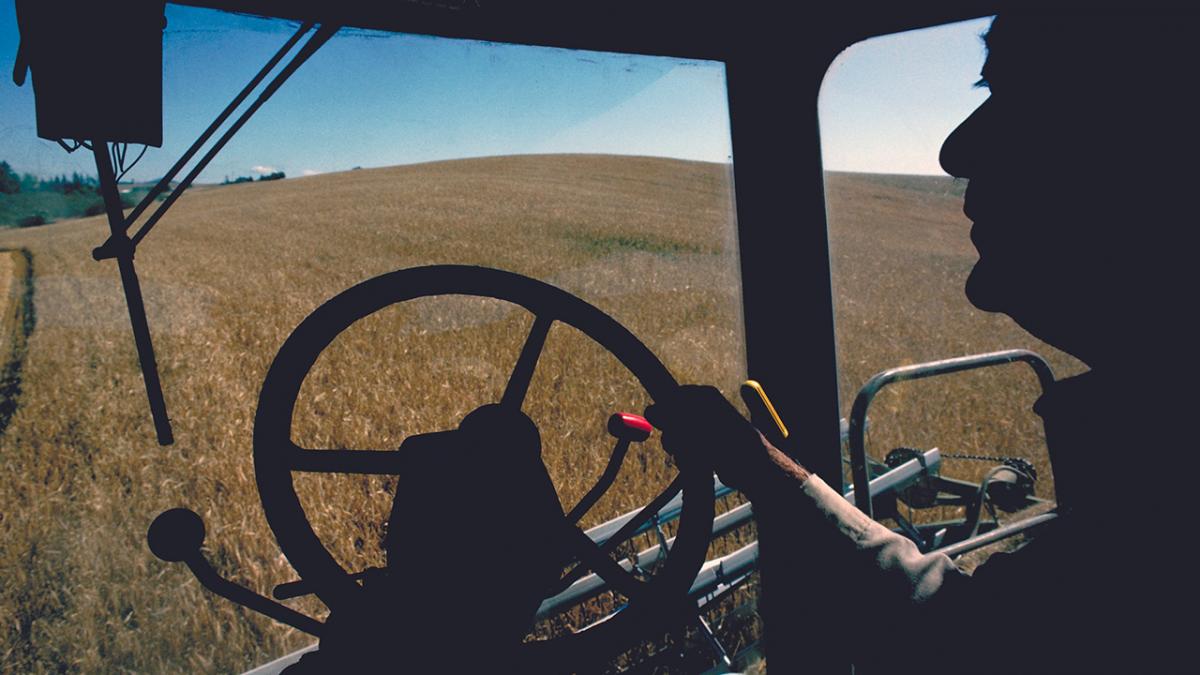USDA (Flickr/Public Domain)
There are many different arrangements across Nebraska as harvest field operations are performed. Many farmers and absentee landowners hire custom operators to harvest their crops for them. The University of Nebraska’s Custom Rates publication1 is a widely utilized report that provides market rate information on various custom services provided across the state. Market rate information, coupled with actual machine operation, costs should be factored into custom rate pricing. Farmers utilizing their own equipment for harvest should know their field operation costs and factor those into their cost of production.
With wheat harvest upon us now, and fall crop harvest in a few months, the rates reported in the 2020 biennial custom rates report are shown below. Although the average statewide flat rate per acre varied by crop harvested and by crop reporting districts, the most common harvest rate per acre reported for small grains (wheat, oats, barley), irrigated or dryland corn, and soybeans is $35 per acre statewide.
2020 Nebraska Report — Custom Harvest Rates
Research from Kansas State University2, Ohio State University and the University of Illinois3, shows that recently reported custom rates are 20.4% (Kansas State University) and 30% (University of Illinois) lower than actual annual machinery operation costs. In the long run, pricing custom services to include all costs is a prudent practice, however the marketplace often drives what rates are charged.
The University of Nebraska-Lincoln’s Department of Agricultural Economics is developing a web-based program called the “Ag Budget Calculator” (ABC) program, which is designed to help producers create budgets for their operations that can also be used to determine costs of machinery operations. Using the ABC program, an example of a combine (power unit) and corn head (implement) are provided with figures associated with each. The entries specific to the equipment shown, along with a few other entries in other sections of the program regarding fuel and labor costs, are needed to generate a field operation cost report as shown. Screen shots of the ABC program’s entry fields and the resulting field operation report are provided below. The required information necessary for the cost calculations should be readily known by the machine owner or found on their depreciation schedule to work from.
Combine (Power Unit) Information
Corn Head (Implement) Information
Field Operation Report — Combine and Corn Head
With this combine and corn head information entered into the ABC program, a field operation cost report is generated showing $37.63 total cost per acre. Diesel fuel cost was entered into ABC at $2.50/gallon (plus 15% added for oil and lube), labor at $25/hour and opportunity cost at 5% of average investment value. Annual machine repair expense was added in, along with depreciation figured using ASABE4 formulas. The cost per acre does not include grain hauling or transportation costs, machinery shelter, or insurance expenses and other overhead. Not counting the additional costs that could be included, the cost per acre for this harvesting operation is $2.63/acre higher than the most common harvest per-acre rate of $35 reported in the 2020 custom rates report. Keep in mind that depending on the size, age, repairs and the purchase costs of your equipment, along with the number of acres or hours your machine covers per year, your harvest field operation expenses may be quite different than the example provided.
Figuring field operation costs is an important part of enterprise cost of production and should play a key role in determining custom rates when used in conjunction with the most recent custom rates report. Cost information is useful for those providing custom services as custom rates are determined. For those that own and operate their own equipment, understanding field operation costs to produce and harvest their crop is key to making important management decisions. A budget program like ABC helps make calculating and summarizing machine and input costs easier with pertinent information generated from it to utilize.
1 Glennis McClure and Jim Jansen, 2020 Nebraska Farm Custom Rates, Department of Agricultural Economics, University of Nebraska–Lincoln, June 2020.
2 Aaron J. Beaton, Kevin C. Dhuyvetter, and Terry L. Kastens, Custom Rates and the Total Cost to Own and Operate Farm Machinery in Kansas, Kansas State University, April 2003.
3 Swanson, K., G. Schnitkey, N. Paulson, C. Zulauf, J. Coppess “Cost Management: Harvest Operations.” Farmdoc daily (10):158, Department of Agricultural and Consumer Economics, University of Illinois at Urbana-Champaign, September 1, 2020.
4 ASABE is The American Society of Agricultural and Biological Engineers. Salvage Value Formula D497.7, Section 6.1 and Repair Factors D497.7, Section 6.2, Fuel Consumption Factors EP49.3 Section 6.3.2








